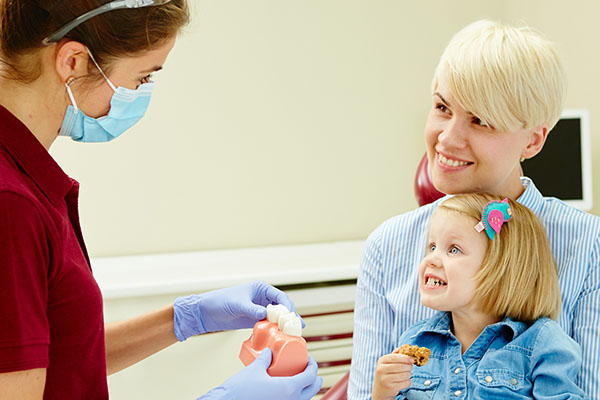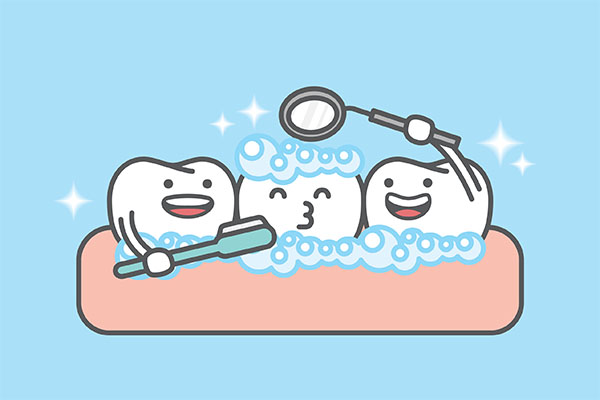 Dentists who practice pediatric dentistry diagnose and treat dental issues in kids and teenagers. Oral health is critical at every stage of life, particularly in childhood. A common chronic condition for children is tooth decay. Dentists perform a professional cleaning on young patients' teeth to help stop cavities and prevent future problems.
Dentists who practice pediatric dentistry diagnose and treat dental issues in kids and teenagers. Oral health is critical at every stage of life, particularly in childhood. A common chronic condition for children is tooth decay. Dentists perform a professional cleaning on young patients' teeth to help stop cavities and prevent future problems.
Steps involved in a professional child’s teeth cleaning
Before the first teeth cleaning, consider preparing your child for the big day. If your kid experiences any nervousness, knowing step-by-step what to expect can help.
1. Taking X-rays
If the cleaning happens at the first appointment or your child has not been to a dental professional in six months to a year, the dentist may take X-rays of the teeth. Digital X-rays can reveal any oral issues the dentist cannot see, such as decay, movement, or bone loss.
2. Examining the mouth
In pediatric dentistry, the professional must look carefully at the child's mouth. During the examination, the dentist or dental hygienist looks at the mouth, gums, and teeth for any signs of disease or decay. During this process, the dental practitioner may question your child about any sensitivity of the teeth. The dentist can also answer any questions about new dark spots or unique concerns with your child's teeth.
3. Removing plaque and tartar
The first step of the actual cleaning process involves removing any tartar and plaque present on the teeth. Professionals remove the plaque and tartar with a handheld tool called a scaler. Using this tool and a mirror, the dental professional removes all plaque and small deposits of tartar. If your child has large deposits of tartar, the dentist can use an ultrasonic scaler that utilizes vibration and water to remove large amounts of tartar.
4. Polishing the teeth
Polishing leaves your kid's teeth shiny and smooth. The practitioner uses gritty toothpaste and a high-powered brush to clean the teeth. The polish smoothes the teeth and removes stains, making it difficult for plaque to continue to build up between cleanings.
5. Flossing the teeth
During professional flossing, the practitioner uses dental floss to get between your child's teeth, particularly in troublesome spots. The flossing can remove any leftover plaque on the teeth and any spots missed during the polishing.
6. Applying fluoride
Fluoride strengthens your child's enamel and helps defend against tooth decay. Typically, kids receive a fluoride treatment following a cleaning. The practitioner may fill a tray with fluoride gel or foam and ask your child to bite down on it for about one minute. When the process is completed, the dentist rinses your child's mouth.
Another way to apply fluoride is with a brush. The dentist paints fluoride varnish onto the teeth. The fluoride hardens on contact, so the child cannot swallow it.
Conclusion
Taking children to a pediatric dentistry office sets them up for a lifetime of positive oral hygiene habits. Kids become acclimated to visiting the dentist when exposed from a young age. Likewise, kids who see a pediatric dentist tend to have better teeth throughout adulthood because of routine cleanings.
Request an appointment or call Grand Parkway Pediatric Dental at 832-579-0960 for an appointment in our Richmond office.
Recent Posts
Visiting a pediatric dentistry office with your child ensures his or her future relationship with oral hygiene and dentists, in general. Whenever your child suffers from oral injuries, consider making an appointment with your pediatric dentist to uncover any underlying problems. For instance, injuries to the tongue and teeth could indicate a deeper jaw or…
Fluoridated water is part of pediatric dentistry. It is a convenient and easy way to strengthen and protect teeth at an early age. Many areas have fluoridated water, which is a definite advantage. If you want to know why a dentist will likely recommend fluoridated water, here are the details.Studies show that almost all sources…
Nutrition is an important part of pediatric dentistry. Having balanced amounts of vitamins and minerals can strengthen and protect the teeth. Proper nutrients also fuel dental function. If you want to know how important nutrition is for your child’s oral health, here are the details from a pediatric dentistry professional.Children are still developing. They need…


